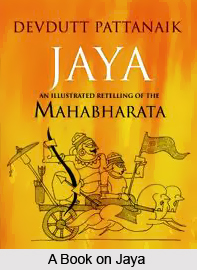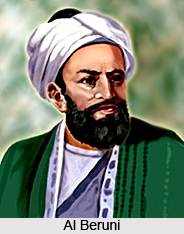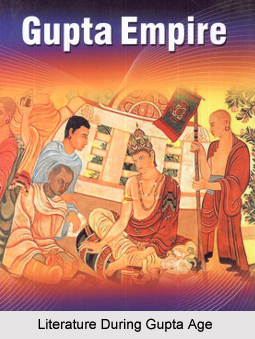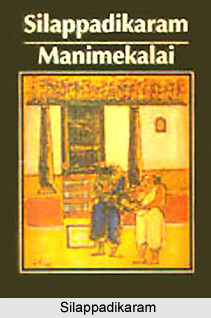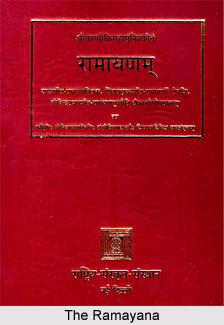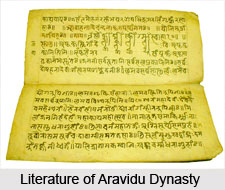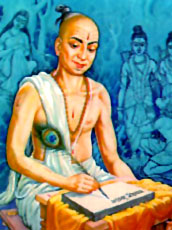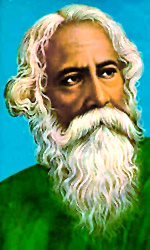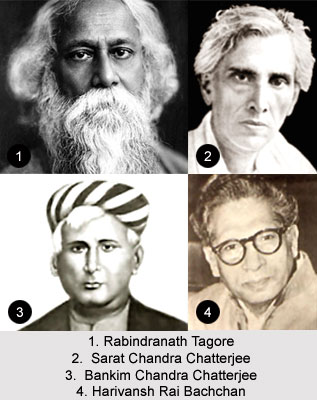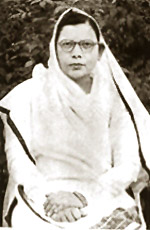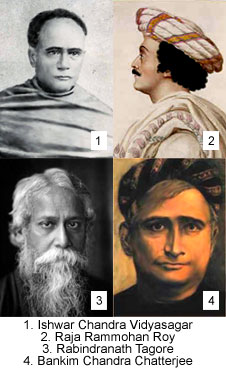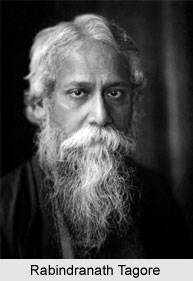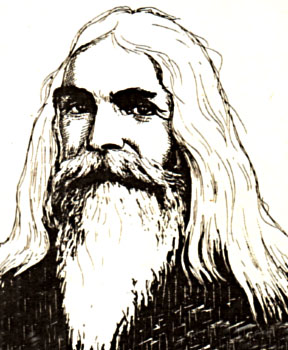 In the Modern Period Rajasthani poetry found expression in the traditional as well as in new forms. The traditional and the modern were rather inextricably mingled, more so up to 1947-50. Ramnath Kaviya had composed poems in doha-soratha. Pabuji ra Soratha described the deeds and glorious death of Pabuji Rathore, the legendary folk-god of Rajasthan. Karuna Bawni, a poem by Ramnath Kavya is based on the vastra haran episode of Draupadi, described in the Sabha Parva of the Mahabharat.
In the Modern Period Rajasthani poetry found expression in the traditional as well as in new forms. The traditional and the modern were rather inextricably mingled, more so up to 1947-50. Ramnath Kaviya had composed poems in doha-soratha. Pabuji ra Soratha described the deeds and glorious death of Pabuji Rathore, the legendary folk-god of Rajasthan. Karuna Bawni, a poem by Ramnath Kavya is based on the vastra haran episode of Draupadi, described in the Sabha Parva of the Mahabharat.
The poet had also written verses in praise of Karanij, the Charan goddess, and marsiyas on Suryamall Misran, Sankardan Samaur and others. The poet has vividly described the plight of Draupadi, in a simple and straightforward manner slightly tinged with sarcasm. The style of Ramnath Kavya includes profundity of emotion, pathos, suggestiveness, simplicity of language and eases of style mark the poems of Ramnath Kaviya. His poems were very popular and were frequently repeated and even imitated, with the result that varying versions were mixed up with the genuine ones.
Rav Bakhtawar was prominent as a traditional modern poet of Rajasthan. One of his major contributions was Kehar Prakas. The poem was composed in 1879. The poems were mostly in Rajasthani with a slight tinge of Braj. It describes the love story of Kesarisiniha and Kamal Prasanna, a concubine, in ten sections, consisting of 1486 metres of different types, including rhymed prose, which the poet has described as varta.
Kaviya Cimanji was a notable traditional Charan poet belonging to the Modern Rajasthani Literature. He contributed to all the trends of the traditional Charan Poetry. Since his poems were composed at a time when the new trends had set in, he was not very popular. Gumansinha on the other hand the jagirdar of Lachmanpura in Mewar, was a yogi and a bhakt poet of high order. The subject-matter of his poems is mostly spiritual contemplation. He expresses devotional feelings in a lucid manner. The language is mostly Rajasthani with slight colloquial influence and has a tinge of Braj.
Barhat Sivbakhsa was a court poet. In his poems he depicted the grandeur of the Maharaja, the beauty of women, hunting and festivals through a description of seasons. The language used is a mixture of Braj, Khadi Boli and Urdu.
A collection of poems by Umardan Lalas is known by the name Umar Kavya. The main note of his poems is social reform and realistic depiction of the prevailing social conditions. His satires on social evils are sharp and uncompromising and occasionally his language becomes crude. His descriptions are charming, impressive and are often rendered in popular similies and sayings. The language is easy Rajasthani.
Maharaj Catursinha was also a prominent traditional poet of modern Rajasthani Literature. He is also known as a great yogi, bhakt and poet of Mewar, where his poems are still popular. The subject-matter of poems mainly is yog, devotion, niti, precepts and social incompatibilities. He has pleaded for the uplift of women and farmers and desistance from all social evils, practices, and superstitions. Originality in explaining profound thoughts, giving new similes, lucidity and simplicity of expression are noticeable. The language of most of his works is easy Rajasthani with colloquial influence of Mewari.
Hinglajdan Kaviya a poet of conspicuous merit was the last great representative of the tradition of the Charan poetry. He is said to have composed many poems. The themes of his poems are mainly historical, heroic and devotion to goddess in the form of Shakti. He is sarcastic about selfish traders and cowards posing as brave warriors. The depiction of vir ras and Sakti is vigorous. The language is mostly literary Rajasthani over which the poet has a good command.
Kesarisinha Barhat was a revolutionary and nationalist poet. He and his family made great sacrifices for the freedom of the country. He gave the call of awakening in his stray verses. He reminded the princely rulers of their past glories and warned them against the baneful policies of the British.
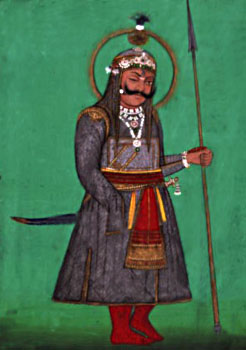
Udayraj Ujal was a scholar of Charan literature and a good poet of the traditional style. His efforts towards propagation and recognition of Rajasthani are commendable. The main note of his poetry is love for Rajasthan, its glory, language and literature. His verses contain a sense of sadness at the vanishing glory of Rajasthan and an appeal to those who could preserve it. He eulogized the heroes of yore and admired the freedom fighters of his times. The metres he used most were soratha, doha, pingal git and chappay. He also composed songs in popular folk tunes.
Nathusinha Mahiyariya was a poet of heroic and nationalist themes in Charan style. Though he had mostly followed the old style, diction and tradition of the historical and heroic poetry, and had been influenced by the poems of Isardas, Bankidas and Suryamall Misran yet he had not been bound by the stereotyped, conventional pattern, and this is the main strength of his poetry. He had given new interpretations to the traditional values and ideals of heroism, and has kept pace with the contemporary consciousness and modern nationalistic feelings. He eulogized the national heroes of the modern age.
Rawal Narendrasinha of Jobner was a historian und a poet of traditional Charan style. His contribution to the almost decaying traditional poetry of Charan style is notable. Kavirav Mohansinha also belonged to traditional poetry. He was a scholar. He had composed poems in both Rajasthani and Braj. The number of his poems is large.
Some of the well known traditional poets belonging to the modern Rajasthani Literature were Muraridas of Bundi, Barhat Balabakhsa Palhawat of Alwar, Maharaja Sangramsinha of Kota, Mukund Dan of Bhuwal, Merta, Rav Man Kumari of Udaipur, Thakur Revatsinha Bhati of Narwar, Kishangarh, Kesarisinha Sonyana of Udaipur, Fateh Karan Ujal of Ujlan, Jodhpur, Sadhu Bhawan Das of Jodhpur, Aksay Sinha Ratanu of Jaipur; Hanuntsinha Dewda, Dev Karan Barhat, Indokali, and Saktidan Kaviya of Jodhpur.
The contribution of sant-bhakti and niti poems is no less either. The tradition of religious and spiritual poems by poets belonging to some religious sects and the poets free from such sectarian attachment continued in the Modern Period but mostly in the conventional style.
It can be inferred that though traditional poetry belonged to Modern Rajasthani Literature but it had a close association with the conventional style of the early days.
